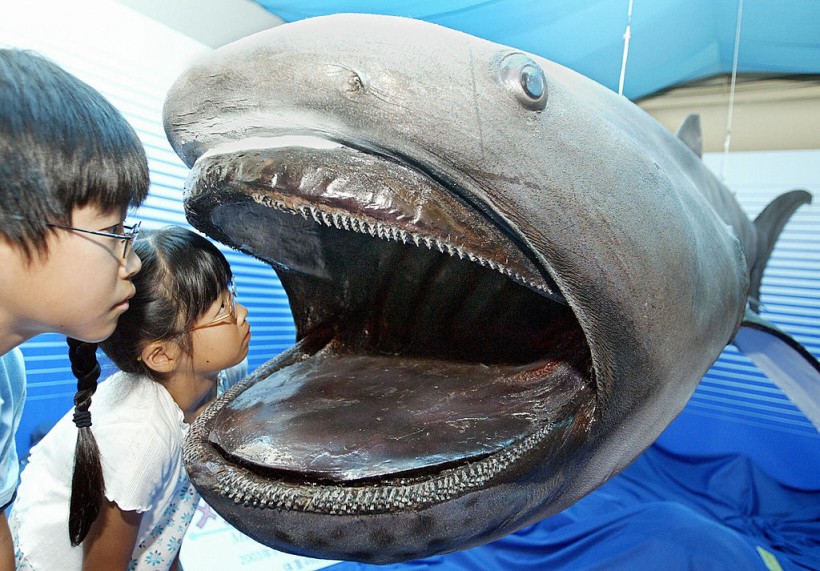For the first time, Filipino zoologists could record a pregnant megamouth shark since the rare species was first found in the mid-1970s.

SIZUOKA, JAPAN: Children peer into a stuffed specimen of a 4.2-meter-long megamouth shark at Tokai University Marine Science Museum in Shizuoka, 200km west of Tokyo, 18 August 2004. The unique shark species is one of only 21 caught since 1976 off Hawaii. The world's first stuffed megamouth, caught on 07 August 2003 near Shizuoka, is on display until 31 August at the museum.
Pregnant Megamouth Shark Found For the First Time
Last November 14, the pregnant megamouth shark was discovered dead along the coasts in Barangay Ipil in the Dipaculao municipality of Aurora. This was according to the National Museum of the Philippines (NMP).
The megamouth shark was found to be 5.6 meters in length. She was also pregnant with seven babies.
The female shark and one pup underwent a necropsy conducted by Dr. Princess Ann Tayang, Vet II of the Bureau of Fisheries and Aquatic Resources's Fisheries and Quarantine Unit. It was conducted via video call with the supervision and help of Dr. AA Paptinchay, who is from the Marine Wildlife Watch of the Philippines (MWWP).
The six other shark pups were brought to the NMP for further analysis and processing. The specimens are to be preserved for further study and research. They will be part of the NMP's future exhibitions and collections.
ALSO READ: Extremely Rare Megamouth Sharks Spotted Potentially Mating Off the Coast of San Diego
Megamouth Shark
Megamouth sharks are a rare and large species weighing up to 1215 kilograms. However, despite its great weight, it is considered the smallest of the three filter-feeding shark species. It falls behind the whale shark and the basking shark.
This shark's name comes from its huge, circular mouth. For a roughly 5-meter-long megamouth shark, its mouth stretches around 1.3 meters.
Megamouth sharks have only been seen in wild settings a couple of times. Only less than 60 of them have been known to be observed or captured. These sharks also dwell as deep as 4,600 meters. Like several other species with close affinities with the deep sea, sharks are believed to only go near the surface during the night and spend most of their lives in the dark terrain.
These sharks are one of the three shark species that consume plankton. They are filter feeders that swim with wide-open mouths, which only have small teeth, to filter out the planktonic prey they prefer. Within their mouths are light-producing organs that could be used for attracting pelagic crustacea and other possible prey.
While megamouth sharks are one of the largest shark species on the whole planet, they were only discovered in the mid-1970s. The first known one was captured accidentally after getting entangled with a sea anchor linked to naval equipment in the deep. This was close to Hawaii.
Since this first encounter, only quite a few dozen sharks have been captured, including a few juveniles.
RELATED ARTICLE: Pregnant Sharks Inserted With New Tracking Technology To Ensure Suitable Habitats When They Give Birth Due to Extinction Threats
Check out more news and information on Animals in Science Times.














